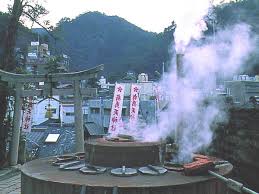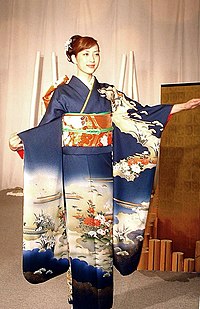In Japan, there are many hot springs due to be located in volcanic region, "Pacific Ring of Fire"
Hot springs are favorite holiday destination for Japanese people. (hot spring in Japanese is called as "Onsen")
Hot springs are known to be therapeutic - like heal stiff shoulders, back pains, rheumatism,
women's diseases etc.
For example, Arima Hot Spring in Hyogo (near Osaka) is known to heal excessive sensitivity to cold, back problem, muscle & joint pain, distal hematogenous disorder, etc. And its spring water keeps the skin moisturized because its salt makes a thin film over the skin. In addition, it contains plenty of meta-silicate which makes the skin milder and keeps the body warm for a longer time.
 |
| Arima Onsen |
 |
| Outdoor hot spring |
There are also outdoor hot springs. It is very nice to see great scenery by taking a bath.
In Japanese hot springs, we don't wear anything. - most foreigners are confused to take off clothes in public.
 |
| Source of spring |
But no problem - once you are used to take a bath without any clothes, your hesitate will be gone.
(and men and women are separated.)
Normally, hotels in hot spring regions have its own hot springs in their hotel. .
 |
| Taketori tei Hotel w/hot spring |
So you can stay at a hotel with hot spring - eating Japanese style cuisine and relaxing in a hot spring. Extremely relaxing time!
The fee
Only taking a hot spring: about 1,000 yen ($ 10)
Accommodation (incl dinner and breakfast): from 10,000 - 40,000 yen ($100-400) - average.


















